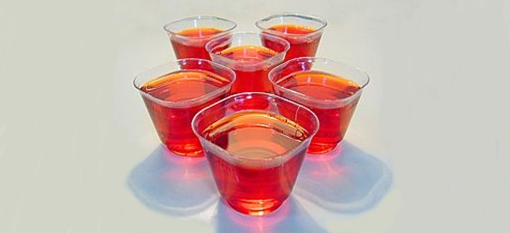Almost everyone has had a bad experience with those brightly colored jello shots synonymous with bad booze and worse ideas. But modern mixologists have reimagined these slurpable solids, creating new textures and beautiful presentations. Are they worth revisiting?
Why do jello shots get such a bad rap? Because it’s just so easy to use cheap hooch and handy powdered mixes to make them. The sugar in these mixes helps to mask the taste of alcohol, and when you tie alcohol up in solid form, it doesn’t dissolve as much on your tongue, which means you can’t taste the alcohol as much. That means that you can easily get a little too drunk without realizing it.
What makes Jell-O or other gelatin turn into a solid? Well, technically, they aren’t solids—they’re gels. And gels are neither solid nor liquid: actually, they’re both. As my friend Naveen Sinha, former head teaching fellow of Harvard’s Science and Cooking Class explains:
“A gel is a material that is mostly liquid by weight, but behaves like a solid. Adding really long molecules, called polymers, or really small particles, called colloids, to a liquid can thicken it. By causing the polymers and colloids to stick together—a process called cross-linking—they can no longer flow past each other, so the liquid behaves like a solid.”
In jello shots, the liquid portion is water and alcohol, while gelatin provides the polymers and colloids needed for structure.
What is gelatin, exactly? Gelatin is derived from collagen, a tough, flexible protein that plays a primary role in all of an animal’s connective and protective tissues, including tendons and ligaments, skin, and bones. Heat it in the presence of water, and you get gelatin, a material that is equally versatile, with applications in everything from panna cotta to body armor.
Find out here how to make extra-strong jello shots.




